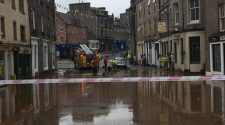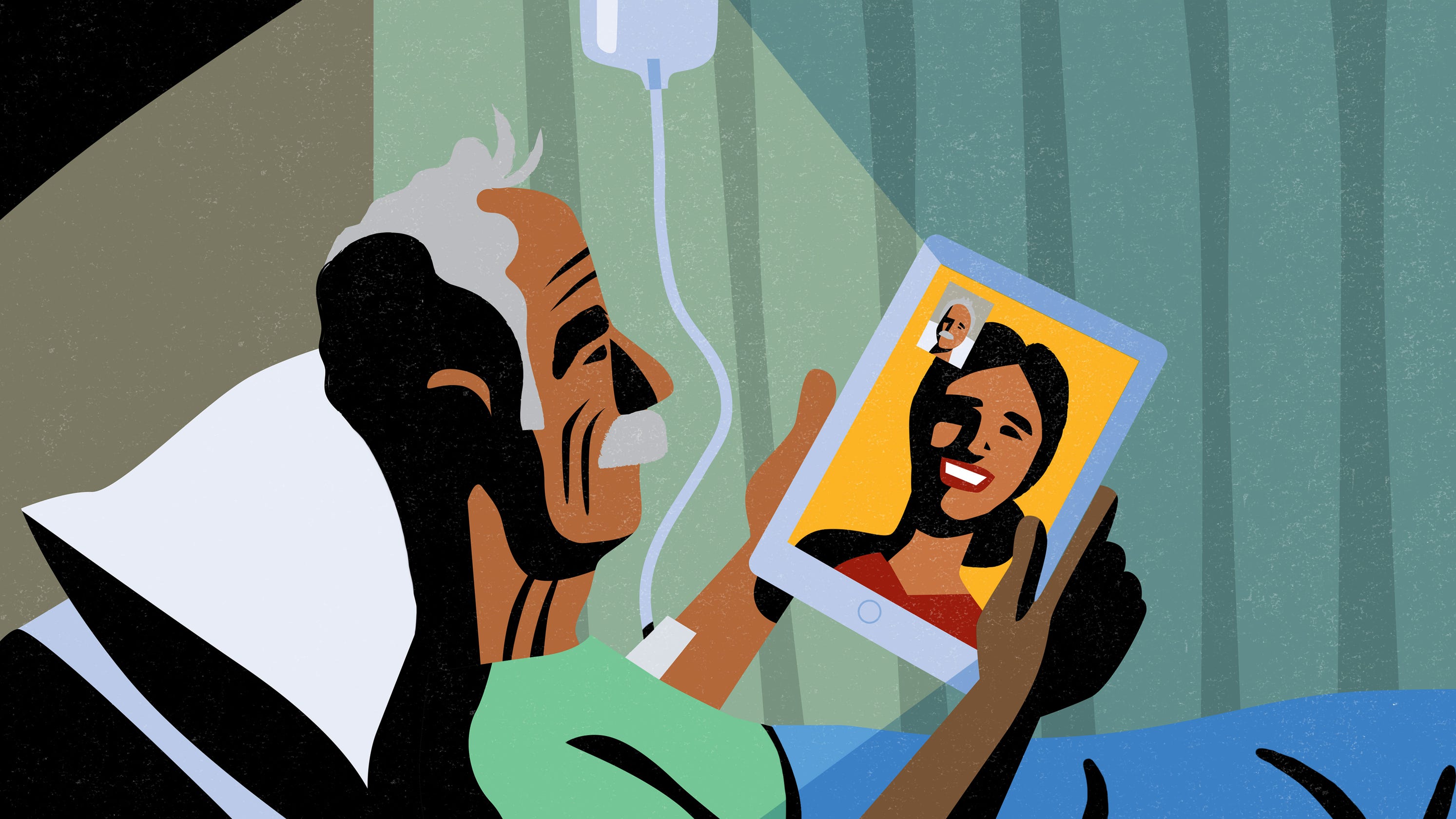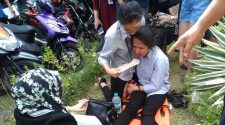Story Highlights
- Caregivers of color face even more of an uphill battle caring for elderly loves ones in a pandemic.
- Technology is key to connecting with loved ones in the hospital, and getting quality medical care while stuck at home.
- Jeannie’s Fund, a charity startup in the New York City area, raised over $34,000 to donate iPads to hospitals and other facilities to make virtual connection easier.
- Telemedicine is booming as doctors hold virtual appointments, but internet issues and regulatory problems challenge access.
Nancy Moreno helped her 77-year-old father out of the car this spring and walked with him to the emergency department at Rochester General Hospital.
Angel Moreno Castro had fallen in his Rochester apartment hours before, and Moreno was worried because his face was swollen and he takes three blood pressure medications. He is also experiencing signs of cognitive impairment.
But when the pair reached the door, Moreno was told she couldn’t accompany her father inside, due to crowd restrictions brought on by the spread of coronavirus. He doesn’t speak English well, and Moreno typically handles conversations with his doctors.
“I had to leave him with the security guard, alone and scared,” she said. “For a lady who’s (in labor,) they’re letting the husband come in. How is that more important than leaving my dad alone without any information?”
Moreno is one of thousands of people across the U.S. who are navigating the coronavirus crisis on top of daily care for elderly loved ones, many of whom have serious medical or cognitive issues. Social distancing restrictions have shut down support groups and informational events, and many in-person doctor’s appointments are not taking place.
And every time a caregiver enters their loved ones’ room with groceries or medicine, they fear bringing a highly infectious virus — one that is most deadly to sick or older individuals — with them.
The crisis is also depriving patients of in-person community when they need it most, said Laura DiMarco, of Princeton, New Jersey, a mom working in the entertainment marketing industry.
DiMarco and two friends — one a nurse on Long Island, the other based in Dubai, United Arab Emirates — worked together on an idea to help. They started raising money to distribute iPads to New York City-area hospitals and other facilities to enable patients to connect virtually with their loved ones.
Within two days of the launch of their website and GoFundMe in early April, they had shattered their initial goal of $10,000. In less than two months, they raised nearly $35,000 and purchased more than 300 iPads.
DiMarco rallied her immediate family and a few willing friends around the effort. They’ve also collected more than 200 donated iPads from individuals and schools.
Donated iPads help solve the challenge of funding, but they also raise questions of safety. The group asks that donated iPads be sanitized and put through a factory reset before donation; they offer an iPad donation checklist on the website.
The group confirms that all iPads are clean, operational and able to connect to Wi-Fi before being distributed to hospitals and nursing homes.
Another initial pitfall was building partnerships. It was difficult to identify who could greenlight and accept the donations at hospitals. The group, as a grassroots startup, had never interacted with them before, DiMarco said. That delayed the initial donation process. Now, the group starts by reaching out to hospital social workers and chief nursing officers.
“That was the biggest kink that we were able to work out,” she said.
Donations have gone to the greater New York City area and beyond. The group also donated iPads to a behavioral health center and a pediatric doctor’s office, to get them into the hands of families and parents so they can connect with their loved ones and also medical staff during appointments or visits.
The project, called Jeannie’s Fund in memory of DiMarco’s mother Jeannie Tomaselli, who was a visiting nurse and died four years ago, has drawn interest from people around the state, and was even featured on Good Morning America.
As the use of telemedicine grows, such grassroots efforts could help with the last link — getting technology in the hands of those who might be well served through virtual connections, especially in under-served communities. That’s especially relevant in Rochester, with an overall poverty rate of 33 percent and where black, Hispanic, multiracial, American Indian and Asian people were all much poorer on average than white people in the city.
Efforts like Jeannie’s Fund, while easing isolation for COVID-19 patients, could also help expand the use of telemedicine — a promising new path in health care that also needs to overcome shortcomings, especially in serving communities of color and rural areas.
Telemedicine: growth and growing pains
 Buy Photo
Buy Photo
Nancy Moreno of Irondequoit talks to her mother, Maria Rodriguez, who was walking around the living room after having a snack on Wednesday, April 15, 2020. Moreno shares care taking responsibility of her parents Maria Rodriguez and Angel Moreno with her sister, Carmen Moreno, seated. The homemade ropes in her parents’ apartment in Irondequoit help keep Maria Rodriguez from leaving a room or entering another room. The rope system was created by Angel Moreno. (Photo: Tina MacIntyre-Yee/ Rochester Democrat and Chronicle)
Telemedicine is not new, but technology has advanced to the point where physicians can easily deliver advice and diagnosis via video call to most residents with an internet connection.
That’s both a strength and weakness: Not everyone has online access, and for caregivers of color, lack of access can mean that the people who need the most support aren’t able to take advantage of the trend.
For Moreno, who was helping her father with his doctor’s appointment, it’s a question of time and practicality. She and her sister, Carmen Moreno, tag-team 24/7 care for their mother, Maria Rodriguez Mora, 77, who has end-stage dementia.
“We have to do everything for her. She can’t even hold a glass. She doesn’t speak, doesn’t recognize anybody,” said Moreno, who handles all the shopping and also cares for three grandchildren periodically.
“I’m keeping it together, but by the skin of my teeth,” Moreno said.
Appointments with her parents’ doctors have been canceled because of the pandemic and have been difficult to reschedule, and those that have been rescheduled are happening over Zoom or Skype.
But a spring eye appointment for her mom was rocky because the connection was bad and Moreno couldn’t hear the doctor speaking. A scheduled Skype doctor’s appointment for her dad was “a total failure” when the online connection refused to work at all.
Still, amid the pandemic, video technology has become vital for medical professionals to continue caring for patients staying at home, and for families and caregivers to be involved in medical decisions around their loved one, especially if that person in elderly or struggling with dementia-related issues.
“When coronavirus hit, it forced more people to say, ‘Let’s try this to see if it works,’” said Caesar Djavaherian, co-founder and medical director at Carbon Health, a telemedicine startup based in the San Francisco area.
Carbon Health has grown from 100 to 300 employees in the past two months. The company offers virtual telehealth services in 16 states, including New York, and plans to be in all 50 states by this summer.
When it comes to patients with dementia, Carbon’s physicians could, for example, discuss potential causes of difficult behaviors with the caregiver and patient, and take action to adjust the patient’s medications, Djavaherian said.
Telemedicine could also revolutionize the experience at emergency departments and hospitals as well if someone isn’t permitted to be in the room with the family member they care for because of coronavirus regulations.
But regulatory roadblocks get in the way of telemedical progress in many states, specifically around medical licensing.
Because a physician typically can’t practice in a state in which he or she isn’t licensed, many states, particularly rural ones, have a shortage of doctors available to administer telemedicine. Rural areas, as well as underserved urban areas, also face broadband internet connectivity issues, which can stymie a patient’s ability to receive quality care, Djavaherian said.
Yet programs that have put technology at their core are showing the potential.
At the University of California Los Angeles, a landmark Alzheimer’s and Dementia Care program has gone almost completely online under coronavirus stay-at-home orders. This isn’t much different from its typical process, said Zaldy Tan, the program’s medical director.
The program offers support to patients with Alzheimer’s Disease or dementia and their family caregivers, using individualized care plans that consider medical history, culture, language and caregiver stress.
The program’s Dementia Care Specialists typically meet with new patients and caregivers in person and correspond later over the phone. Now, the intake visits happen over Zoom, and the specialists are on hand to collaborate with a hospital or primary care doctor about a patient’s care if need be.
The program also provides a variety of resources for families on its website, including an FAQ sheet about pandemic-related issues that could arise for dementia patients, such as anxiety or overeating.
“We’re not a procedure-heavy program, so from the patient or caregiver end, this works really well,” Tan said.
Caregivers of color face uphill battle
Family caregivers often walk through life nearly invisible to the rest of society, while at once being indispensable to those they care for. Adult children whose parents or elder family members are battling dementia or other chronic illnesses may feel the best choice for their loved ones is at-home care, rather than a nursing home or assisted living facility.
Studies show that this choice can come with added stress, a decrease in overall caregiver health and a steep learning curve of the U.S. medical and insurance systems. According to the National Alliance for Caregiving and an AARP survey of Caregiving in the U.S., more than half of African American family caregivers find themselves “sandwiched” between caring for both an older loved one and a younger one or ones.
The Democrat and Chronicle released an in-depth series on the world of caregiving last fall, which detailed the complications of caregiving for a loved one, especially as a caregiver of color, and finding private in-home care.
Dementia and other illnesses are more prevalent in African-American communities than in white communities, and families of color are more likely than their white counterparts to be faced with caring for a loved one or family member with dementia or other debilitating illness.
Both black and Hispanic families are also more likely to see this care as a usual part of family life, not as a burden they need help lifting.
The coronavirus pandemic added a new obstacle to caregivers’ lives as they try to navigate caregiving duties while also caring for their own kids and working from home.
Michael and Sonya Bruce, of Henrietta, are facilitating doctor’s appointments by phone for Michael Bruce’s father George Bruce, who lives with them and is “88 years young.”
“He’s older, and you have to wonder what would happen,” said Sonya Bruce. “Will we be able to get him to the hospital? Then you worry about going to the hospital, and the contagions that you come in contact with. We take every precaution to keep him healthy in his own environment.”
As a veteran, George Bruce receives his healthcare through the U.S. Department of Veterans Affairs, and his medical exams and appointments have been converted almost exclusively to telehealth.
The need to get more people connected exists in hospitals and nursing homes even without a pandemic on the scene, so the people behind Jeannie’s Fund are hoping to continue to donate tablets where they are needed.
“If we can’t heal COVID, we can at least heal the effects from the isolation,” said DiMarco.
Pandemic shows work still to be done
The coronavirus pandemic is already revealing the shortfalls of elder care in the U.S., and the ordeal could lead to people pushing for more inclusive, higher-quality elder support, said Perinton resident Mimi Lee.
“The whole world is on pause because of this unseen virus, and you look at the areas that are suffering the most,” she said. “If you neglect (the elderly,) you are weakening the entire system.”
She and her sister Lily Lee care for their elderly mother at home. During this period of social distancing, they’ve helped her facilitate Zoom calls with a fellowship group once a week, as well as an online church service. She relies heavily on her Christian faith to lift her spirits, they said.
The sisters are passionate about supporting Asian American elders and their families as they navigate caregiving in a culture that places a high value on keeping aging loved ones at home.
To that end, they’ve connected with organizations like Lifespan and the local Alzheimer’s Association to advocate for things like Chinese language brochures, interpreting services and meal services that serve Asian dishes to the elderly in those communities.
Every person will be elderly someday, and the support available for that population in Rochester, especially in communities of color, could be taken to a new level, said Lee.
“How can we change the present so that we can take effect for tomorrow?” she said.
More caregiving solutions: How a landmark UCLA dementia program could ease burdens in Rochester communities of color
Fixing the caregiver shortage: Why these health aides are twice as likely to stay on the job
More: This unique program is helping people who care for their loved ones with dementia and more
This project is funded by a grant from the Solutions Journalism Network.
About this series:
African American and Hispanic families tend to take care of their own, especially when it comes to caring for a loved one with dementia or other health issues. And the pandemic has hit communities of color especially hard.
The Democrat and Chronicle has been reporting on solutions for caregivers of color in our community, both professional and those who care for loved ones in their homes.
This is the second of three stories in this latest installment of solutions-oriented stories on the topic. The first story looked at outreach done by service agencies to help those in need with everything from emotional support to free grocery deliveries. The third story will look at an effort to help professional caregivers stay on the job by addressing whatever challenges that arise amid the pandemic.
Sarah Taddeo is the consumer watchdog reporter for USA Today Network’s New York State Team. She investigates stories about your consumer rights, including scams, negligent landlords, safety issues and wayward businesses.
Got a story tip or comment? Contact Sarah at [email protected] or (585) 258-2774. Follow her on Twitter @Sjtaddeo. This coverage is only possible with support from our readers. Sign up today for a digital subscription.
Read or Share this story: https://www.democratandchronicle.com/story/news/2020/06/26/caregiving-pandemic-technology-key-quality-healthcare-communities-color/5137010002/














